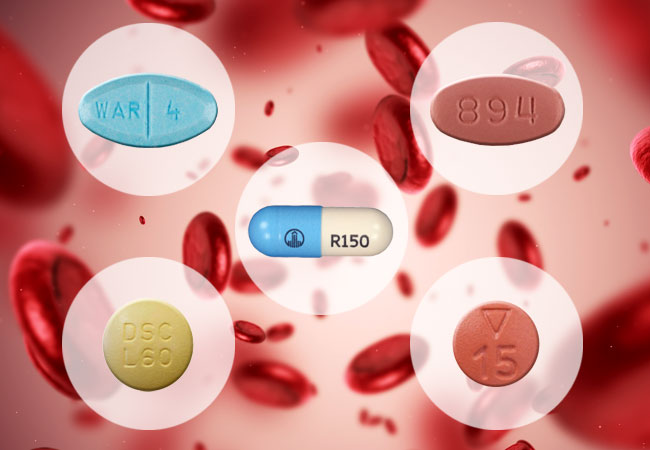This is Bleeding Disorders Awareness Month!
- March 3rd, 2021
- No Comments

Are You on Blood Thinners?
Now’s the time to make sure you and your loved ones include any missing bleeding disorder or medication in your medical alert data. This group includes people with hemophilia and Von Willebrand disease, which are blood clotting conditions. Additionally, it covers patients taking blood thinners, such as Coumadin or its generic name Warfarin.
Who Takes Blood Thinners?
There are several reasons people take blood thinners. The most common are cardiovascular conditions, such as heart disease and atrial fibrillation. Patients may also take blood thinners following a heart valve replacement and reducing risk after certain surgeries.
What is the Purpose of Blood Thinners?
These medications are anticoagulants. Common prescriptions include warfarin and heparin (Coumadin). Its purpose is to prevent the blood from clotting to reduce the chances of a stroke or heart attack. Another type of blood thinner is an antiplatelet drug. Examples include aspirin, which can stop blood cells from clotting.
Precautions for Patients on Blood Thinners
The benefits of anticoagulants outweigh the side effects and potential interactions. However, patients taking these medications need to be very careful about what they take, eat, or drink when using them. During a medical emergency, especially when you can’t speak, medical professionals must know about any blood thinners you take. Even something as simple as antibiotics can cause an adverse interaction.
Various drugs can increase or reduce the effects of anticoagulants. For example, aspirin can expand the chances of bleeding, and vitamin K can decrease the impact, increasing blood clots’ potential. In addition to prescriptions, over-the-counter medicines, and dietary supplements, alcohol can change the body’s reaction to blood thinners.
If you take any new herbal supplements or vitamins and fall ill, make sure to tell the responding emergency personnel what and when you consumed it. This information can help them determine the best course of action for your immediate health status.
Update Your Medical Alert ID
After any new cardiovascular diagnosis, you should update your medical alert information. This vital data can help save your life in the event of an emergency. By having all the health documents they need, medical professionals can quickly diagnose and treat you or your loved one. Your medical alert and medical USB bracelet contain detailed information, giving practitioners a complete overview of your health, medications, conditions, recent treatments, and allergies.
By choosing a USB bracelet, patients can update the information fast to prevent deadly treatment errors. Too often, something as simple as knowing all allergies, medications, and specific medical conditions can change the outcome of almost any medical emergency.
Be proactive this March for Bleeding Disorders Awareness Month. Take the time to check your loved one’s medical alert ID and other vital records to ensure blood thinner is visible for first responders and other medical practitioners.
Universal Medical Data LLC offers attractive and engraved medical ID bracelets that are comfortable to wear all the time, waterproof, and available in several colors. Don’t gamble with a loved one’s health. Keep their medical alert data up-to-date and readily available for health care professionals.
